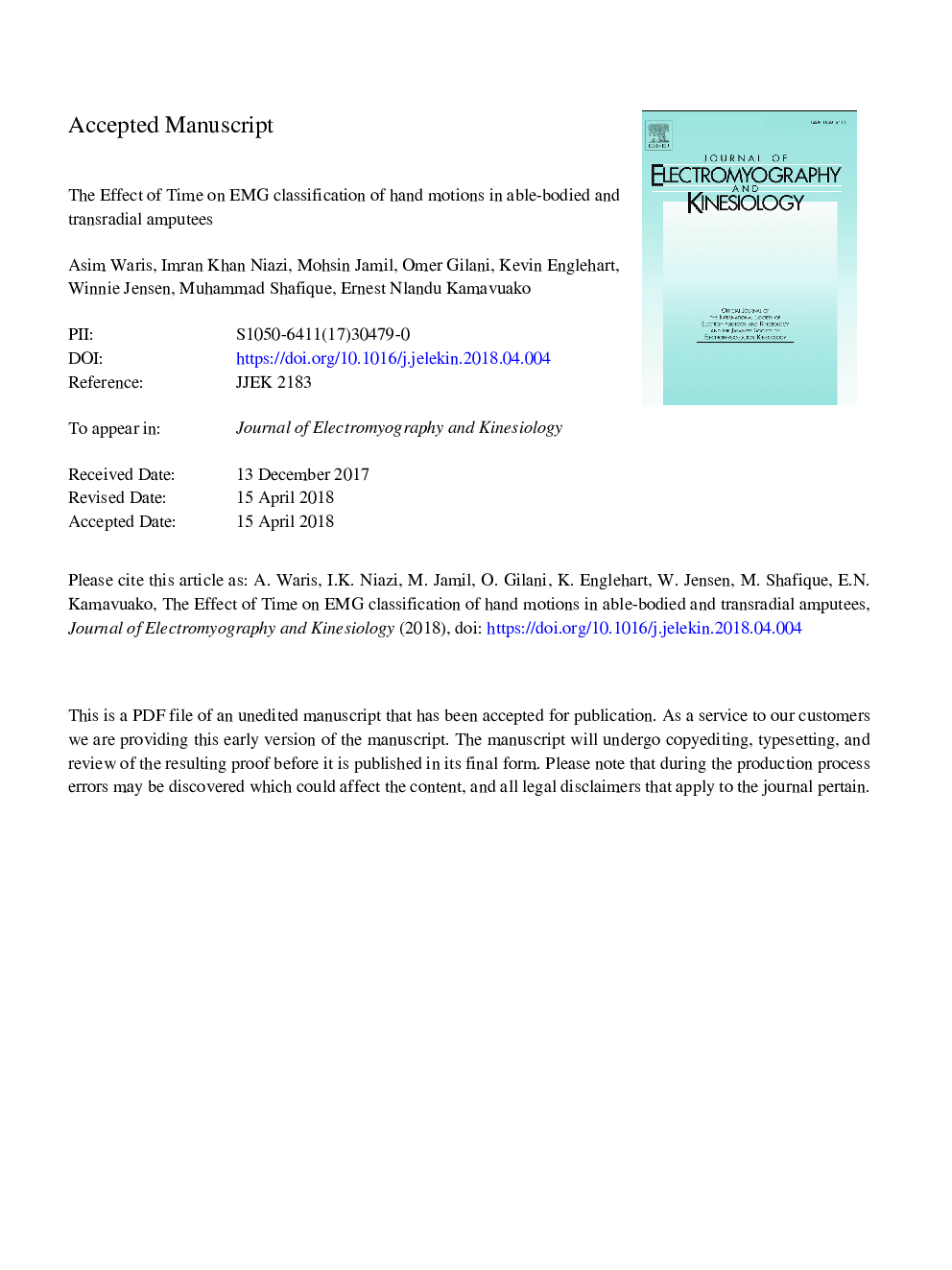| Article ID | Journal | Published Year | Pages | File Type |
|---|---|---|---|---|
| 8799775 | Journal of Electromyography and Kinesiology | 2018 | 28 Pages |
Abstract
While several studies have demonstrated the short-term performance of pattern recognition systems, long-term investigations are very limited. In this study, we investigated changes in classification performance over time. Ten able-bodied individuals and six amputees took part in this study. EMG signals were recorded concurrently from surface and intramuscular electrodes, with intramuscular electrodes kept in the muscles for seven days. Seven hand motions were evaluated daily using linear discriminant analysis and the classification error quantified within (WCE) and between (BCE) days. BCE was computed for all possible combinations between the days. For all subjects, surface sEMG (7.2â¯Â±â¯7.6%), iEMG (11.9â¯Â±â¯9.1%) and cEMG (4.6â¯Â±â¯4.8%) were significantly different (Pâ¯<â¯0.001) from each other. A regression between WCE and days (1-7) was on average not significant implying that performance may be considered similar within each day. Regression between BCE and time difference (Df) in days was significant. The slope between BCE and Df (0-6) was significantly different from zero for sEMG (R2â¯=â¯89%) and iEMG (R2â¯=â¯95%) in amputees. Results indicate that performance continuously degrades as the time difference between training and testing day increases. Furthermore, for iEMG, performance in amputees was directly proportional to the size of the residual limb.
Related Topics
Health Sciences
Medicine and Dentistry
Orthopedics, Sports Medicine and Rehabilitation
Authors
Asim Waris, Imran Khan Niazi, Mohsin Jamil, Omer Gilani, Kevin Englehart, Winnie Jensen, Muhammad Shafique, Ernest Nlandu Kamavuako,
